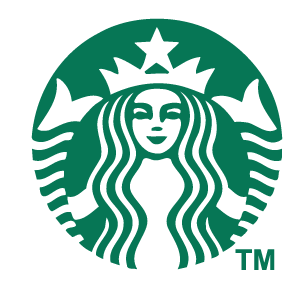Recycling & Reducing Waste
Starbucks is committed to significantly reducing and diverting the waste our stores generate, and recycling is just one way in which we do this.
But while recycling seems like a simple, straightforward initiative, it’s actually extremely challenging. Not only are there municipal barriers to successful recycling in many cities, but it takes significant changes in behavior to get it right. One wrong item in a recycle bin can render the entire can unrecyclable to the hauler. Local municipalities, landlords, customers, baristas, and even adjacent businesses all have to work together to keep recyclable materials out of the landfill.
Our goal
Double the recycled content, recyclability and compostability, and reusability of our cups and packaging by 2022.
What we’ve been doing
Despite the many challenges, we’ve been tackling recycling and waste reduction on many fronts.
Recycling in Stores
When looking at the waste generated at a Starbucks store, most of it can be found behind the counter or in the backroom in the form of cardboard boxes, milk jugs, syrup bottles, and coffee grounds. Many of our stores recycle these items, but because it is done behind the counter and in the backroom, it’s not something our customers typically see. What they do see is what happens in the café area.
Recycling success depends on the availability of commercial recycling services where our stores are located. While our policy is that stores recycle where space and services are available, execution often presents challenges, both with customer perception of the services being provided and the actual service itself. Also, different commercial recyclers accept different materials, so we’re not able to provide a consistent program from store to store. And for stores located in shared spaces like malls, it is often the landlord who controls waste collection and recycling.
In spite of these challenges, we are focused on working with others to make recycling easier for us and our customers.
Greener Cups
Over the years Starbucks has launched several initiatives to decrease the environmental impact of our disposable cups.
- In 1997 – , we developed our recycled-content cup sleeve as a way to protect customers from hot beverages and avoid the waste of “double cupping.”
- In 2006 – , we launched the industry’s first hot beverage paper cup with 10% post-consumer recycled fibre
- In 2008 – werolled out a new plastic cup with less of an environmental impact
- In 2009 – wehosted a Cup Summit in Seattle, bringing together all facets of our paper and plastic cup value chain to find agreement on criteria for a comprehensive recyclable cup solution
- In 2010 – we continued to build momentum with our second Cup Summit on a number of projects to drive cup recycling, and leveraging assistance from academic experts in systems thinking from MIT
- In 2011 – participants from previous Cup Summits gathered at MIT announce progress on actions plans from the previous Cup Summits. They were joined by a growing number of representatives from all facets of the paper and plastic cup value chain
We are committed to doing more and continue to search for new ways to reduce the environmental footprint of our disposable cups and other packaging.
Reusable Cups
Reducing the environmental impact of our cups depends on the success of two interrelated efforts: developing recyclable cup solutions and dramatically increasing our customers’ use of reusable cups.
Since beginning of its business operations in Thailand in 1998, Starbucks has been encouraging customers to reuse their cups, and since 2013, has offered a 10 baht discount to those who purchase a beverage with their personal cups. Together, Starbucks and customers in Thailand have helped save more than 13 million single-use cups. In addition, in-store customers can request their beverages to be served in a ceramic mug.
Composting
Grounds for Your Garden, introduced in 1995, provides interested customers with complimentary five-pound (2.27-kilogram) bags of soil-enriching coffee grounds.


